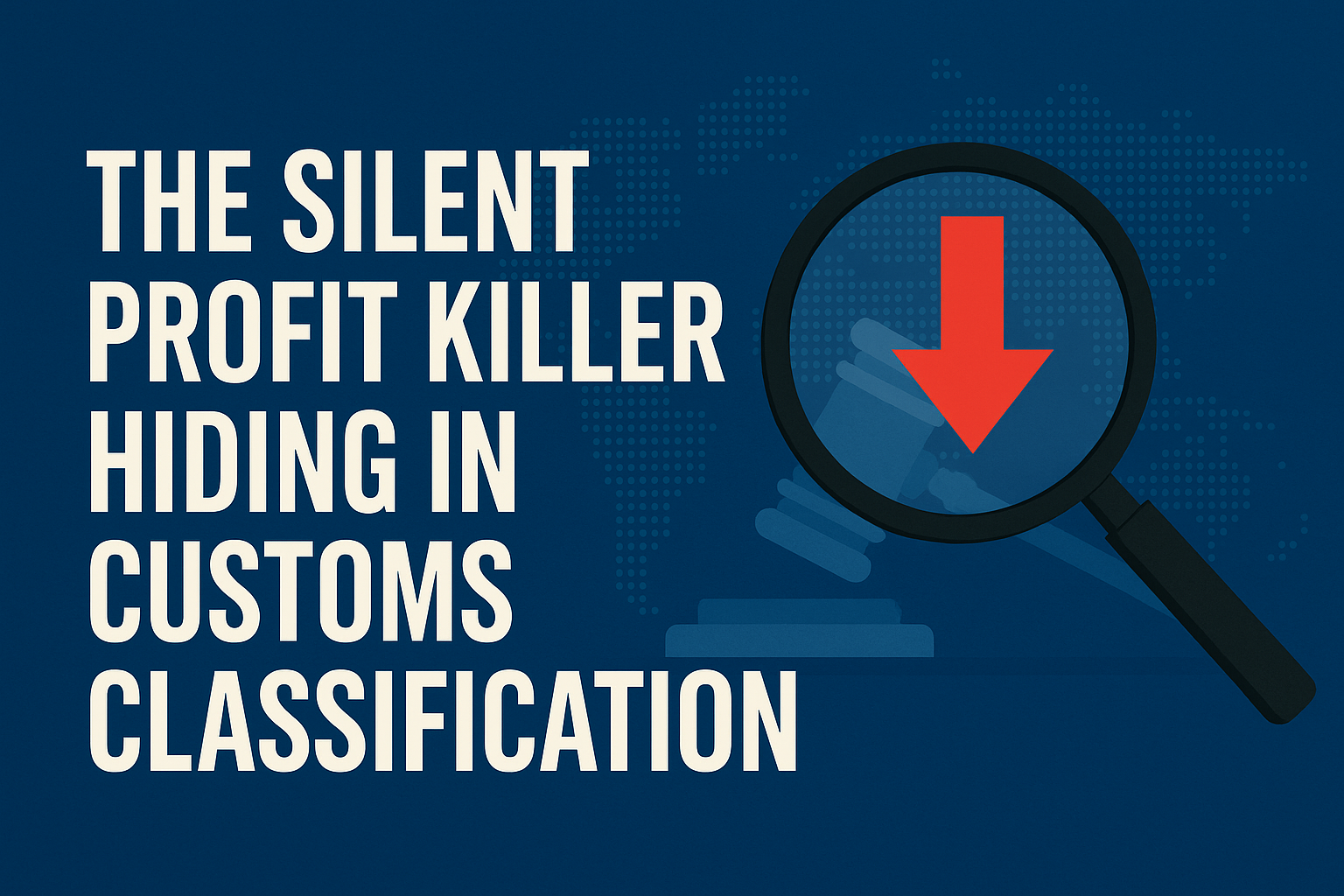Three-quarters of CPG brands entering big box retail underestimate their EDI implementation by 50-100%, leading to costly delays, compliance failures, and strained retailer relationships that take months to repair.
Electronic Data Interchange (EDI) represents the invisible backbone of modern retail operations, yet most emerging CPG brands treat it as an afterthought until Target or Walmart demands compliance within 60 days. The reality is stark: brands that approach EDI implementation without proper planning typically face $50,000-$150,000 in unexpected costs, 3-6 month delays, and penalty-generating compliance failures that damage crucial retailer relationships.
The stakes extend far beyond technology integration. Major retailers process millions of transactions through EDI systems that demand 99.9% accuracy, real-time responsiveness, and flawless document formatting. A single ASN error can trigger $500-$2,000 in chargebacks, while systematic EDI failures often lead to vendor termination—the retail equivalent of business death.
Understanding why most CPG brands stumble through their first EDI implementation isn’t just about avoiding technical pitfalls. It’s about recognizing that EDI success determines whether your retail expansion accelerates your growth or becomes an expensive lesson in operational complexity.
The five critical mistakes that doom EDI implementations
Mistake #1: Underestimating Supply Chain Complexity
Most CPG brands approach EDI thinking “it’s just data exchange” without recognizing the intricate web of standards, protocols, and trading partner requirements they’re entering. EDI encompasses dozens of document types (850 purchase orders, 856 advance ship notices, 810 invoices), multiple transmission protocols (AS2, SFTP, HTTP), and various standards including ASC X12, UN/EDIFACT, and GS1 EDI.
The complexity multiplies exponentially with each trading partner. Walmart requires different ASN timing than Target, Amazon demands specific UPC validation that differs from Kroger’s requirements, and 3PL providers each have unique integration protocols. Brands frequently budget for “one EDI connection” only to discover they need 5-10 different configurations, each requiring separate testing, mapping, and ongoing maintenance.
Geographic expansion compounds this challenge. International retailers often require EDIFACT standards while North American partners use ASC X12, forcing brands to support multiple protocols simultaneously. The semiconductor shortage particularly exposed this vulnerability when brands discovered their “simple” domestic EDI couldn’t accommodate urgent supplier changes across different standard requirements.
Mistake #2: Choosing the Wrong EDI Type
EDI implementation offers three primary approaches, each with distinct cost structures and operational implications that most brands fail to evaluate properly.
Direct EDI (Point-to-Point) creates individual connections between companies, offering maximum control but requiring extensive in-house expertise. Small CPG brands often choose this approach for cost savings, only to discover that managing multiple direct connections becomes prohibitively expensive as they scale. Each new trading partner requires separate technical integration, ongoing maintenance, and dedicated support resources.
EDI via Value Added Networks (VANs) provides third-party managed connections that simplify multi-partner relationships but introduce transaction-based pricing that can spiral unexpectedly. Brands processing 10,000 EDI documents monthly at $0.30-$0.50 per transaction face $3,000-$5,000 monthly VAN fees that weren’t included in initial budgets.
Web EDI replicates paper-based processes through online forms, appearing simple but creating dangerous bottlenecks during high-volume periods. Brands succeeding with small-scale Web EDI often crash when holiday order volumes overwhelm manual processing capacity, leading to late shipments and retailer penalties.
Mistake #3: Inadequate Data Quality and Integration Planning
EDI systems amplify existing data problems rather than solving them. Brands with inconsistent product catalogs, inaccurate inventory data, or poorly maintained SKU information discover that EDI automation rapidly distributes these errors to trading partners, creating systematic compliance failures.
The “garbage in, garbage out” principle becomes expensive reality when incorrect pricing data in your ERP automatically generates thousands of wrong invoices, or inaccurate inventory levels trigger stock-out penalties across multiple retailers simultaneously. Manual processes often catch these errors before they reach customers, but EDI automation removes this safety net.
Integration challenges particularly affect NetSuite users, where complex data mapping requirements frequently exceed initial estimates. While NetSuite offers robust ERP functionality, it lacks native EDI capabilities, requiring middleware solutions that add $25,000-$75,000 to implementation costs. Brands often budget for “simple NetSuite EDI integration” without realizing they’re purchasing an entirely separate software ecosystem.
The problem intensifies with existing WMS and 3PL relationships. Each system requires custom data mapping to ensure seamless information flow between ERP, warehouse management, and EDI platforms. These integrations typically require 2-4 months of development and testing that brands rarely account for in their go-live timelines.
Mistake #4: Underestimating Implementation Timelines and Costs
Industry surveys consistently show that CPG brands estimate EDI implementations will take 30-60 days and cost $10,000-$25,000, while actual projects require 4-6 months and $50,000-$150,000 investment. This dramatic underestimation stems from treating EDI as a technology purchase rather than a comprehensive business process transformation.
The hidden timeline killers include:
Trading Partner Testing and Certification requires 2-4 weeks per major retailer, often running sequentially rather than parallel due to resource constraints and technical dependencies. Each trading partner demands specific test scenarios, document validation, and compliance verification before approving live transactions.
Data Mapping and Translation consumes 6-12 weeks for complex product catalogs, particularly when multiple trading partners require different data formats for identical information. Food and beverage brands typically face extended mapping periods due to nutritional information, allergen data, and regulatory compliance requirements that vary by retailer.
ERP Integration and Middleware Configuration extends timelines by 4-8 weeks when existing systems lack EDI-ready data structures. NetSuite implementations particularly suffer delays when custom fields, workflows, and approval processes must be redesigned to accommodate EDI automation requirements.
Staff Training and Change Management requires 2-6 weeks of dedicated preparation as teams learn new processes, error handling procedures, and monitoring responsibilities. This critical phase often gets compressed when projects run behind schedule, leading to operational mistakes during the crucial go-live period.
Mistake #5: Ignoring Ongoing Operational Requirements
Most CPG brands focus exclusively on initial EDI implementation while ignoring the substantial ongoing operational demands that determine long-term success. EDI isn’t a “set it and forget it” technology—it requires continuous monitoring, maintenance, and optimization that many brands discover only after go-live.
Trading partner requirements change constantly, with major retailers implementing 9,000+ specification updates annually across their vendor networks. Walmart might modify ASN timing requirements, Target could introduce new barcode validation rules, or Amazon may implement enhanced product data requirements—each change requiring immediate EDI system updates to avoid compliance penalties.
Error monitoring and resolution becomes a daily operational responsibility that demands dedicated resources and expertise. EDI systems generate thousands of transaction confirmations, error reports, and exception notices that require prompt attention. A single unresolved EDI error can cascade into missed shipments, compliance violations, and retailer chargebacks within hours.
Performance optimization requires ongoing analysis and adjustment as transaction volumes grow and trading partner requirements evolve. Brands often implement EDI systems adequate for current volumes only to discover that growth strains their infrastructure, requiring expensive upgrades and reconfigurations within their first year of operation.
The true cost structure reveals hidden financial impacts
EDI implementation costs extend far beyond initial software licensing and setup fees, yet most CPG brands budget only for obvious expenses while ignoring substantial hidden costs that often double total investment requirements.
Technology Infrastructure Costs typically consume 40-60% of total EDI budgets but vary dramatically based on chosen approach and integration complexity. Cloud-based EDI services range from $500-$5,000 monthly for basic functionality, while enterprise solutions exceed $10,000 monthly for high-volume operations with advanced features.
NetSuite-specific integration adds $25,000-$75,000 to implementation costs due to middleware requirements and custom development needs. While NetSuite offers robust business management capabilities, its lack of native EDI functionality requires third-party solutions like SPS Commerce, TrueCommerce, or Cleo that each have distinct pricing models and integration approaches.
Professional Services and Implementation Support often exceeds software costs, particularly for complex trading partner requirements or custom integrations. Quality EDI implementation partners charge $150-$300 per hour for experienced consultants, with typical projects requiring 200-500 hours of professional services. Brands attempting to minimize these costs through cheaper providers often discover that “inexpensive” implementations become expensive when they fail during critical retailer testing phases.
Ongoing Operational Expenses include VAN transaction fees, support and maintenance costs, and internal staffing requirements that continue indefinitely. Transaction-based pricing models create variable costs that scale with business growth, potentially reaching $5,000-$15,000 monthly for successful brands processing hundreds of thousands of documents annually.
Hidden Compliance and Penalty Costs can quickly exceed implementation budgets when systems fail to meet retailer requirements. Major retailers impose $500-$2,000 chargebacks for EDI compliance failures, while systematic problems can trigger vendor termination processes that destroy months of relationship building and market development investments.
Success strategies that differentiate winning implementations
The CPG brands that successfully navigate EDI implementation share common approaches that prioritize business process alignment over technology deployment, comprehensive testing over rapid go-live, and ongoing operational excellence over initial cost minimization.
Strategic Assessment and Planning begins with thorough analysis of existing business processes, data quality, and trading partner requirements before selecting any technology solutions. Successful brands audit their current ERP data structures, inventory management processes, and order fulfillment workflows to identify gaps that EDI automation will expose rather than solve.
This assessment phase typically requires 2-4 weeks but prevents months of costly rework when fundamental business process issues are discovered during implementation. Brands discover that “simple” EDI projects become complex when their product catalogs lack consistent SKU structures, pricing data contains errors, or warehouse processes can’t support required shipping notice timing.
Technology Selection Based on Business Requirements involves evaluating EDI solutions against specific trading partner needs, transaction volumes, and growth projections rather than focusing primarily on initial costs. Successful brands choose solutions that can accommodate their three-year growth trajectory rather than optimizing for current requirements alone.
NetSuite users particularly benefit from certified integration partners like SPS Commerce that offer pre-built connectors and deep ERP expertise rather than generic EDI providers requiring extensive custom development. These partnerships typically cost 20-30% more initially but reduce implementation risk and time-to-value significantly.
Comprehensive Testing and Certification Programs ensure that EDI systems perform flawlessly under real-world conditions before processing live transactions. Successful brands allocate 30-40% of their implementation timeline to testing phases that validate not just technical connectivity but complete business process workflows from order receipt through payment processing.
Staged Rollout Approaches begin with one major trading partner to validate core functionality before expanding to additional retailers or product lines. This methodology allows brands to refine their processes, train staff, and optimize performance in a controlled environment rather than attempting simultaneous multi-partner implementations that often overwhelm available resources.
Dedicated Operational Teams include designated EDI specialists responsible for daily monitoring, error resolution, and trading partner relationship management. Successful brands either hire dedicated EDI coordinators or partner with managed service providers that offer ongoing operational support rather than expecting existing staff to absorb these responsibilities.
ROI measurement reveals compelling business benefits
EDI implementation delivers quantifiable returns that justify substantial initial investments, but only when measured comprehensively across operational efficiency, cost reduction, and business expansion opportunities rather than focusing narrowly on transaction automation savings.
Labor Cost Reduction represents the most immediate and measurable ROI component, with EDI automation reducing order processing time by up to 80% through elimination of manual data entry, order confirmation calls, and document routing delays. Brands processing 1,000 orders monthly typically save 160-200 staff hours per month, translating to $4,000-$8,000 monthly labor cost reductions.
Error Reduction and Chargeback Avoidance delivers substantial cost savings through improved accuracy and compliance. Manual order processing averages 1-2% error rates that can trigger $500-$2,000 retailer chargebacks per incident, while EDI automation reduces errors to less than 0.1% when properly implemented and maintained.
Inventory Optimization Benefits emerge through improved visibility and automation of advance ship notices that enable more precise inventory management. Brands typically reduce inventory carrying costs by 7-12% through better demand forecasting and automated replenishment triggers enabled by EDI data integration.
Accelerated Cash Flow results from faster invoice processing and reduced payment delays. EDI automation enables same-day invoicing upon shipment confirmation rather than manual processes that often introduce 3-7 day delays, improving cash conversion cycles and reducing working capital requirements.
Business Expansion Opportunities provide the largest long-term ROI through access to major retailers that increasingly require EDI compliance for vendor onboarding. Brands with established EDI capabilities can onboard new trading partners in 2-4 weeks rather than 3-6 months required for manual compliance development.
Three-year ROI calculations consistently show 200-400% returns for properly implemented EDI systems, with payback periods of 12-18 months for brands achieving operational excellence. However, these returns require ongoing investment in system optimization, staff training, and trading partner relationship management that many brands underestimate.
Future-proofing EDI investments for evolving retail requirements
The retail landscape continues evolving toward greater automation, real-time data requirements, and sophisticated compliance monitoring that demands EDI systems capable of adapting to emerging requirements rather than simply meeting current standards.
API Integration and Real-Time Data Exchange increasingly supplements traditional EDI batch processing as retailers demand immediate inventory updates, shipment tracking, and demand signals. Brands implementing EDI systems today should ensure their chosen platforms support modern API connectivity and real-time data streaming capabilities.
Artificial Intelligence and Predictive Analytics integration enables automated demand forecasting, inventory optimization, and exception management that transform EDI from a compliance requirement into a competitive advantage. Leading EDI platforms now incorporate machine learning algorithms that predict shipping delays, optimize inventory allocation, and automatically adjust orders based on demand patterns.
Blockchain and Supply Chain Transparency requirements are emerging across food safety, sustainability, and authenticity verification use cases that will require EDI systems capable of supporting immutable transaction records and complex multi-party data sharing.
Regulatory Compliance Evolution continues expanding across data privacy, environmental reporting, and product safety documentation that must integrate with existing EDI workflows. Brands should select EDI platforms with built-in compliance frameworks rather than bolt-on solutions that create operational complexity.
The most successful CPG brands view EDI implementation as a strategic foundation for retail excellence rather than a technical hurdle to overcome. By avoiding the five critical mistakes that doom most first attempts, investing in comprehensive planning and testing, and choosing implementation partners with deep retail expertise, emerging brands can transform EDI from an expensive requirement into a competitive advantage that accelerates their retail success.
Struggling with EDI implementation complexity and worried about costly mistakes? Cedar Advisory specializes in helping CPG brands navigate retail technology requirements without breaking budgets or missing deadlines.
Our EDI Readiness Assessment identifies your specific requirements, evaluates technology options, and creates implementation roadmaps that avoid the costly mistakes that derail most first attempts.
Don’t let EDI implementation become your retail roadblock. Schedule a free 30-minute consultation to discover how we can accelerate your retail technology success while minimizing risk and cost.







